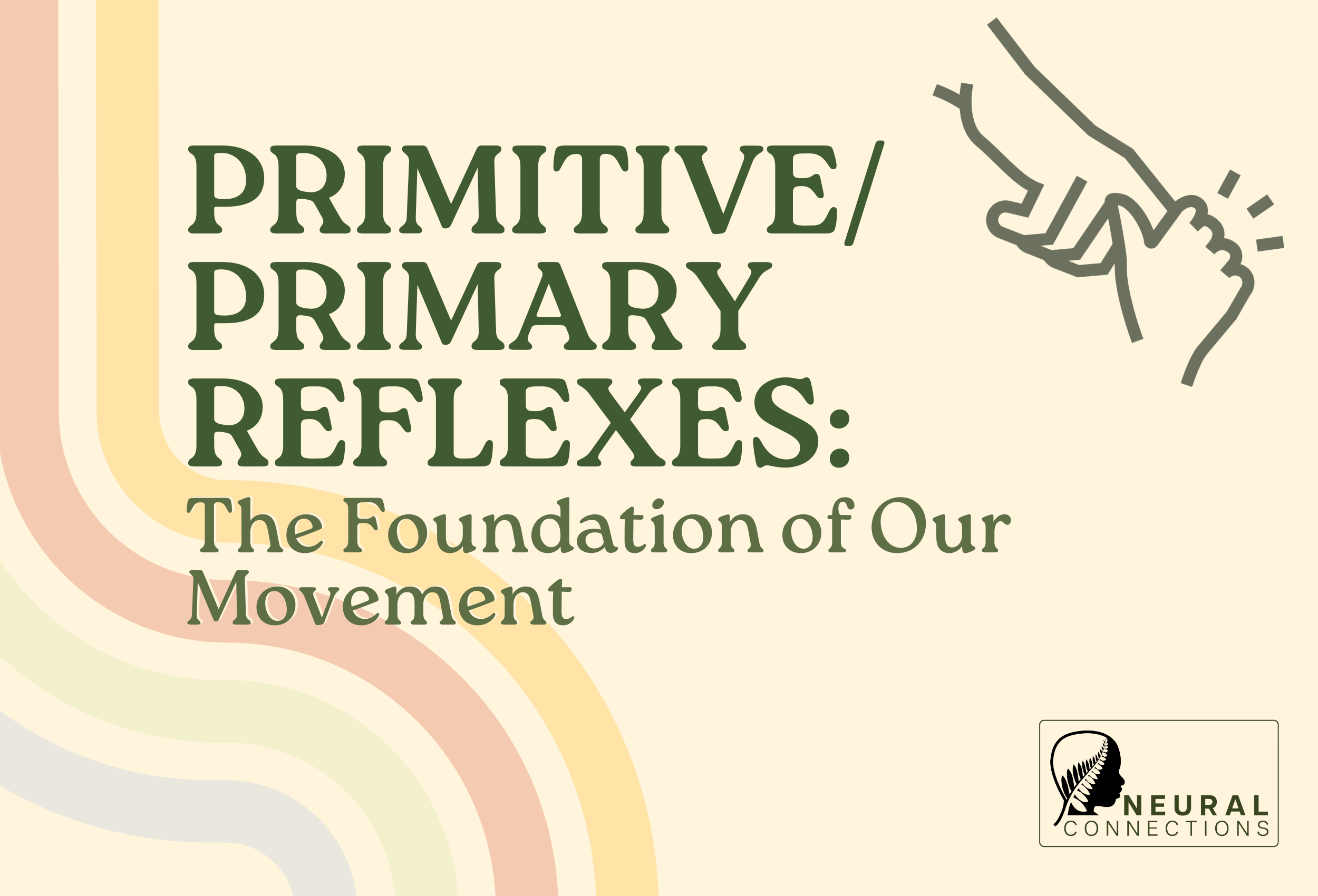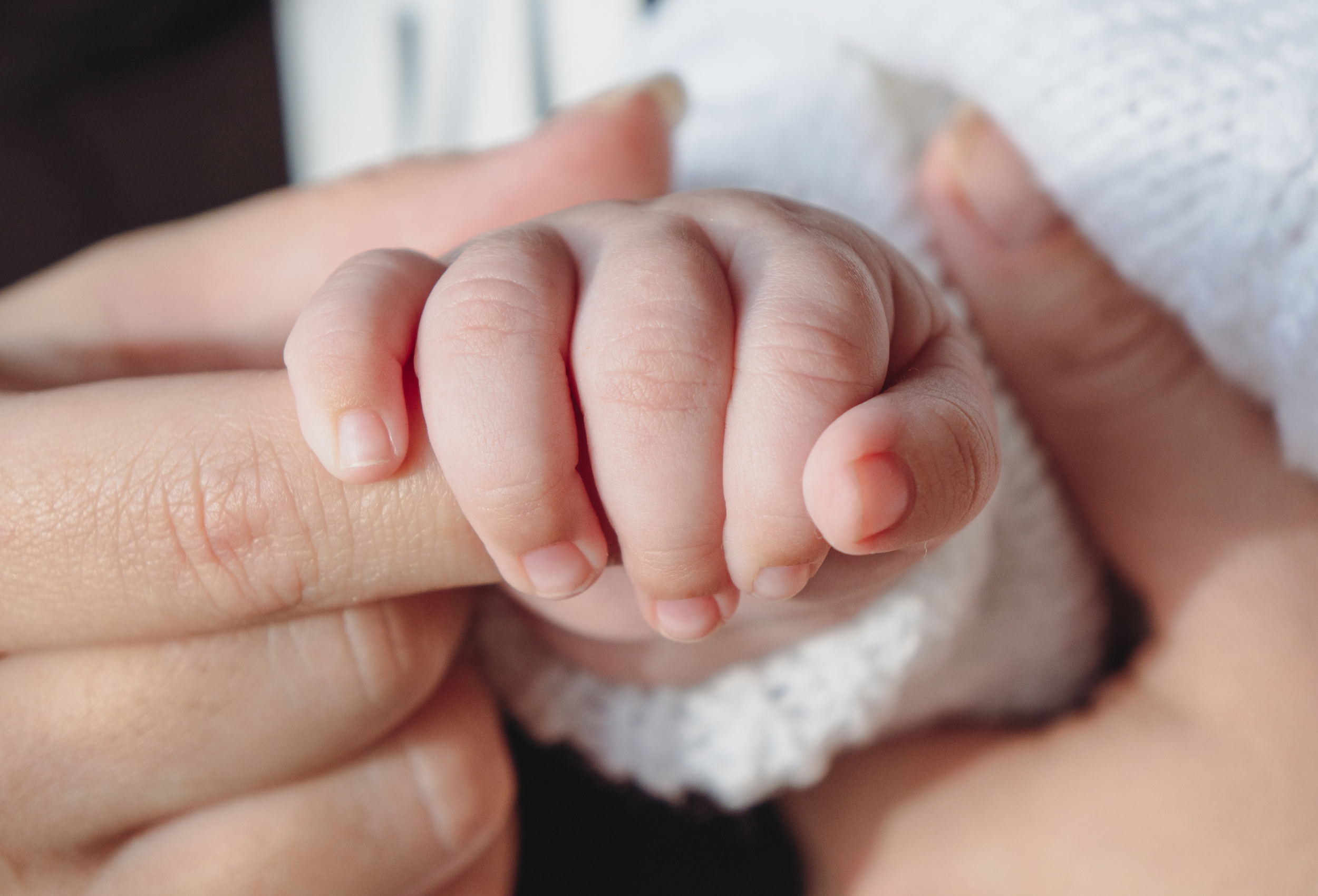Primitive Reflexes: The Foundation of Our Movement
Have you ever marvelled at how infants are able to grip your finger when you offer it to them? Or how it is that babies know how to nurse and swallow? How do they even know what to do? How do we communicate with them when they can’t talk or don’t yet understand language?
All of these amazing things happen because of primitive reflexes - also referred to as primary reflexes or infant reflexes. These reflexes are much like a manual or set of programmed instructions that live in the brain stem and are at work inside the womb and are present at birth. They are called primitive because they exist in the early stages of life to help babies survive for their protection and later to help them thrive. Primitive reflexes are automatic and they happen unconsciously outside of their control. They develop to help babies move through the birth canal (during a vaginal birth), to be able to suck, to feed, to lift their head and kick, and to withdraw from danger. They are involved in every aspect of a baby’s life and they are necessary for survival and protection.
The rooting reflex, for example, allows babies to turn their heads when their cheeks are stroked. This helps them locate their food source.
Initially these movements are unconscious and automatic but later the reflexes mature into voluntary and controlled actions. When this happens, the child is in control and makes the choice to move, rather than be influenced by retained primitive reflexes.
Why is the integration of primitive reflexes so important?
Even though primary reflexes are essential to survival and protection through birth and the first few months of life, most of them should be integrated by the time a baby is 12-18 months old. Reflexes are involved all the time when babies are playing – they are the building blocks and the foundation for all future motor movements and perception. In a typically developing brain, they integrate (they do not disappear) to develop voluntary, controlled, and deliberate movements in the future.
We can see this clearly in the grasp reflex in newborn infants. The reflex allows them to grasp your fingers when offered to them, while simultaneously developing motor skills each time. Later on when the reflex is properly integrated, babies initiate the movement and reach out to grab objects that they are interested in. No longer a pure reflexive response, this has developed and integrated into actions that are voluntary and intentional. An integrated primary reflex forms the basis for future learning and development, allowing the child to develop cognitive skills, movement and emotional competence.
The grasp reflex in newborns - this is the foundation for other movements when the reflex is integrated.
If a child faces cognitive, movement or learning challenges in school or even at home, it might be worth checking to see if their primitive reflexes have been fully integrated. In many instances, when a child has poor motor coordination or has difficulties regulating their emotion, the natural development of primary reflexes into matured reflexes might have been interrupted. This results in compensation during movements while moving or sitting still for deskwork and play.
When we work on integrating the primitive reflexes, the brain and body connection is improved and is more efficient, leading to a well regulated nervous system. This in turn reduces stress, and allows for better emotional connection and self expression.


